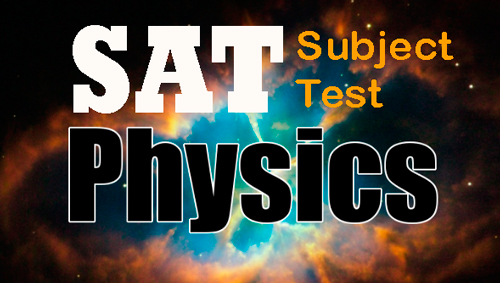Generally, Students searching “how can I get an 800 on the physics SAT subject test”. So, Learn what’s tested for SAT Physics from. We updated essential information about each SAT Subject Tests Details on this spot. And the detailed description of the SAT Subject Tests Physics can be found on the College Board website.

SAT Physics
The SAT Subject Test in Physics measures your ability to solve specific problems with the application of physical principles. The Physics SAT 2 test also assesses your understanding of simple algebraic, trigonometric, and graphical relationships, the concepts of ratio and proportion, and how to apply these concepts to physics problems.
Topics Covered
Below is the College Board’s list of which topics are covered in SAT Subject Tests Physics.
| CONTENT | APPROXIMATE % OF TEST |
| Mechanics Kinematics, such as velocity, acceleration, motion in one dimension, and motion of projectiles Dynamics, such as force, Newton’s laws, and statics Energy and Momentum, such as potential and kinetic energy, work, power, impulse, and conservation laws Circular Motion, such as uniform circular motion and centripetal force Simple Harmonic Motion, such as mass on a spring and the pendulum Gravity, such as the law of gravitation, orbits, and Kepler’s laws | 36–42 |
| Electricity and Magnetism Electric Fields, Forces, and Potentials, such as Coulomb’s law, induced charge, field and the potential of groups of point charges, and charged particles in electric fields Capacitance, such as parallel-plate capacitors and transients Circuit Elements and DC Circuits, such as resistors, light bulbs, series and parallel networks, Ohm’s law, and Joule’s law Magnetism, such as permanent magnets, fields caused by currents, particles in magnetic fields, Faraday’s law, Lenz’s law | 18–24 |
| Waves and Optics General Wave Properties, such as wave speed, frequency, wavelength, superposition, standing waves, and Doppler effect Reflection and Refraction, such as Snell’s law and changes in wavelength and speed Ray Optics, such as image formation using pinholes, mirrors, and lenses Physical Optics, such as single-slit diffraction, double-slit interference, polarization, and color | 15–19 |
